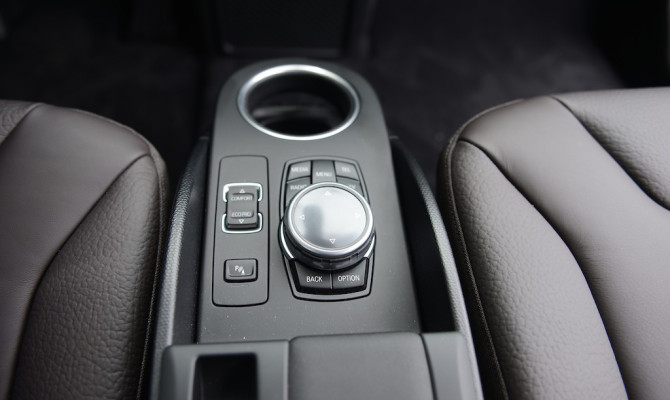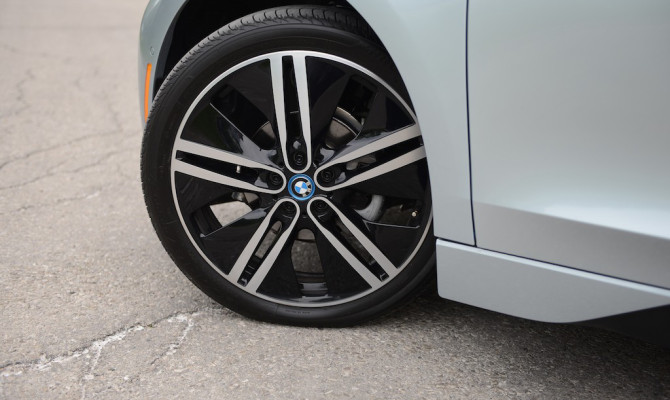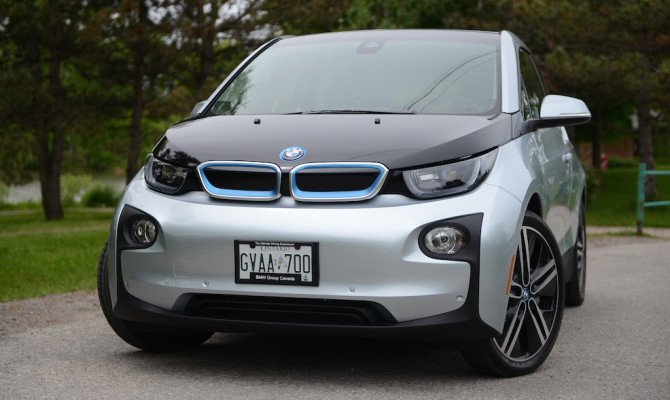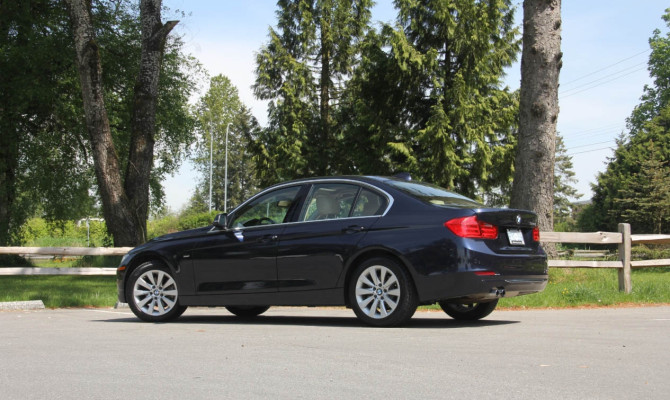Electric car buyers need to know if they can live with the limits of the electric cars’ range or if they want the flexibility to extend the range with an on-board generator…
This story could be obsolete in a month as automakers add electrification to existing models and introduce all new models, at an incredible rate.
The market for electric cars or plug-in hybrids is very small but it’s growing. The success of Tesla’s Model S has shot its stock price into the stratosphere, as investors bet on that company’s emergence as the electric car and technology leader. The stock price should really reflect the cars sold, as Tesla can only make about 20,000-25,000 cars annually for a worldwide market.
The Market
Green Car Report recently published a sales report on all electrics sold in Canada for the first six months of the year. The list of vehicles sold is compiled from companies’ self-reporting but Ford’s data is missing. This Green Car Report estimates that Ford’s numbers will push overall electric sales to 2,200 for the first half of the year, a 50 per cent improvement over a year ago. What we do get is a good snapshot of the market. With only 1,941 electrics officially counted, amounts to only 0.21 per cent of the overall Canadian marketplace. (Canadians are on track to buy almost 1.7 million vehicles this year.) So these are tiny but important numbers and the trend is higher. The clear winner isn’t the Tesla at all; in fact it is in third place behind the Chevy Volt and Nissan LEAF. Chevy sold 831 Volts up to July with Nissan selling 462 LEAFs and Tesla moving 290 Model S cars. The Smart Full Electric Drive comes in fourth with 163 cars sold and in its first month of sales (June) the BMW i3 looks good with 50 units sold.
Not all electric cars are the same
What many people don’t realize is the complexity of the electric car market. I look at it this way, if the car can be plugged into an outlet; it is at least partially electrified. There are pure electric cars like the Nissan LEAF, Tesla Model S, Smart Electric, Mitsubishi i-MiEV and BMW’s new i3 – all of these use just electricity to propel the car. Then there are electric cars that have an onboard generator, should the range of the electric pack limit driver’s intentions. The Chevy Volt, Cadillac ELR, the Toyota Prius Plug-In and the BMW i3 are, or can be equipped, with a gasoline engine to either drive the wheels or charge the battery. This is one area where the Chevy Volt wins. With roughly a 65 km range on pure electricity and a small generator on board to extend the range indefinitely, this car makes a lot of sense. This is why the BMW i3 has an optional generator for $3,000 to extend the range of that model. But if the buyer chooses this option, the range of pure electric drive is limited because of the added weight of the car. Electric car buyers need to know if they can live with the limits of the electric cars range or want the flexibility to extend the range with an on-board generator.
What is still to come?
We are living in interesting times.
More and more electric cars are being added, not to meet the demand but to meet regulatory requirements. For the model year 2016, the United States has a new cooperate average fuel economy (CAFE) standard that has each manufacturer trying to hit 35.5 mpg average across their fleet, including small trucks. This isn’t doable with the current internal combustion engine technology, so these manufacturers are looking to electrification as the answer. Even though more and more electric versions will arrive, don’t expect them to sell. In fact, most car companies don’t expect them to sell at all; they just want the mpg credit towards the new regulations. This might sound cynical but watch how many electric cars will arrive, especially for the 2016 model year, and how many you will actually see on the road. Most are built at a loss, to offset thirstier, gas-loving machines.
Verdict
Even though electric car sales are very small and many new models will go unnoticed, the trend to electrification is here. With markets like China mandating a percentage of electric cars to offset its horrific pollution, will help move the numbers of electric vehicles worldwide. This, along with steady adoption rates here in North America will help promote better charging infrastructure. Another factor is the price to own an electric car. The Smart Electric is priced at $27,000 making it the least expensive full electric car. With Nissan hacking its price on the LEAF to just over $31,000 and the Volt starting at roughly $35,000, these cars are more affordable than ever. I think the BMW i3 is very attractive for $45,000 because it is a luxury brand at an attainable price. The real showstopper will be the Tesla Model III that they hope to sell for US$35,000 with more than 400km of electric range when it is introduced in 2017.
Even though Tesla has the sex appeal going right now, don’t count out the other mainstream manufacturers with decades, if not centuries of auto making knowhow, to take on the challenge.
Most buyers are attracted to a 3 Series because it’s simply a great car to drive…
The compact 3 Series sedan is the definitive BMW and the most popular car made by the Bavarian Motor Works.
The 5th generation (2006 to 2011) of the 3 Series line had, by 2010, expanded to include Touring (wagon), 2-door coupe and Cabriolet (convertible) editions, in addition to the sedan, which is internally know as the E90.
Primarily a rear-drive vehicle with an in-line six cylinder engine up front, the 2010 sedan came as a 323i (2.5-litre), 328i (3.0-litre), 335i (twin-turbo 3.0-litre) and 335d, with a twin-turbo 3.0-litre diesel engine. All-wheel-drive sedan editions, with the x-Drive system, were the 328i xDrive and the 335i xDrive. There’s also an ultra high-performance and pricey M3 edition, with 4.0-litre V8 engine.
A six-speed manual came standard and is a popular transmission with 3 Series buyers. The automatic option was either a conventional six-speed (with a manual mode) or a seven-speed dual-clutch gearbox.
Moving ahead, the 2011 model year 3 Series came with a minor exterior refresh that included new headlight units with LED signals, modified front and rear bumpers and air intakes, and new taillights with LED technology. Under-hood it also came with new TwinPower Turbo technology on a revised 3.0-litre engine.
An all-new sixth generation BMW 3 Series sedan (know internally as the F30) was introduced for the 2012 model year. Longer and lighter, with more rear seat leg room, the new body styling comes with a more distinctive frontal appearance. The base engine is also a four-cylinder, which hadn’t been offered in a 3 Series since the 318i, back in the late 1990s.
Known as the N20 engine, and fitted in the 320i and 328i, this new four-cylinder also comes with TwinPower Turbo technology and can be mated to an 8-speed automatic transmission. It makes the 2012 edition of the 328i both faster (0 to 100 km/hour in about six seconds) and more fuel efficient than its predecessor. In addition, it comes with a fuel-saving Auto Stop/Start system and Brake Energy Regeneration. City/highway fuel consumption is rated at a surprisingly frugal 8.0/5.3 L/100 km respectively.
Blind Spot Detection and Lane Departure Warning systems were good-to-have active safety features available. Used buyers can also look for models with a Surround View camera system that gives a driver rear, front, side and top (bird’s-eye) perspectives of the vehicle while parking.
Availability of BMW’s xDrive (all-wheel-drive) system was expanded for 2013, with the introduction of new 320i xDrive and 335i xDrive editions. Another (late) addition for 2013 was a gas/electric hybrid version, called ActiveHybrid 3. This sporty hybrid can sprint from 0 to 100 km/h in about 5.5 seconds, yet offers combined city/highway fuel economy of 7.1 L/100 km.
A solid reputation for mechanical reliability has helped it repeatedly achieve “Recommended Buy” status from Consumer Reports. However, most buyers are attracted to a 3 Series because it’s simply a great car to drive.
**********
Price Check: 2010 – 2013 BMW 3 Series Sedan (May 2014)
Year Edition Expect to Pay Today
2010 328i Sedan $19,000 to $23,000
2011 328i Sedan $23,000 to $27,000
2012 328i Sedan $28,000 to $33,000
2013 328i Sedan $34,000 to $39,000
Prices vary depending on a used vehicle’s condition, mileage, usage and history. A complete mechanical check should always be performed by a reliable auto technician prior to purchase.
**********
Safety Recalls: 2010 to 2013 BMW 3 Series Sedan:
2007/2008/2009/2010/2011: The positive battery cable connection to the fuse box may fail while the vehicle is being driven and result in an engine stall or the loss of other systems, such as lights. Dealers will replace the positive battery cable connector with an updated version.
2010/2011: Housing bolts for the variable camshaft timing system may break, allowing camshaft timing to deviate. If this occurs, the engine would revert to “limp home mode”, limiting available engine power. Dealers will replace housing bolts that break and perform associated repairs for 10 years/unlimited mileage from the vehicle’s in-service date.
2011: On sedans equipped with xDrive (all-wheel-drive), the front driveshaft attachment bolts may not have received adequate tightening torque during vehicle assembly. Should the fasteners loosen and fall out, the driveshaft would detach and result in additional damage to the driveline. Dealers will replace the front driveshaft attachment bolts.
2013/2014: A defect in manufacturing could result in a loss of oil supply to the vacuum pump and cause a loss of power assist to the braking system. Dealers will install a camshaft seal disk locking ring.
Recent Comments
- { Enjoyed your Forest of Bowland in the BMW X5M, particularly the photo of the BMW in front of the main part of Stonyhurst College where... }
- { Bantam designed the Jeep, not Willy's or Ford. The American military gave the original Bantam prototype to Willys and Ford to copy. There is plenty... }
- { All Escalades come with a 6.2-lilter V8 engine that produces 420 horsepower. A six-speed automatic is the only transmission offered and drives the rear wheels.... }
- { Alexandra is an excellent journalist. }
Popular Posts
- Journey to a ‘Sparkling’ Luxury Okanagan Resort “Four lucky readers will put a Dodge Journey’s weekend-...
- The Need For Speed: Hike Those Highway Limits More than half of those polled believe the province sho...
- Drives-U-Crazy… Erratic drivers. An early morning drive from Kelowna to Vancouver is nor...
- Readers Respond: The Pros and Cons of Increasing B.C. Speed Limits Increasing the speed limits will only increase risk to...
- Honda CR-V Review: The Compact Crossover To Get Things Done The CRV is a very stylish and aerodynamic crossover veh...


























